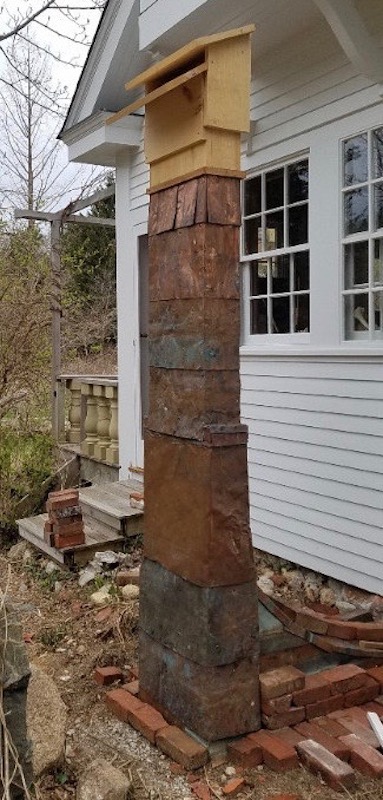Northern long-eared bats are confirmed as off-season residents of the Vineyard.
In November, a group of bats was found flying in a West Tisbury cellar space. They moved in for the winter and emerged from hibernation in mid-April.
The bats were identified by BiodiversityWorks, a group that has been studying the Island’s northern long-eared bat population since 2014. Director Luanne Johnson told the Gazette over the phone Monday that the group long suspected that the bats were hibernating on-Island over the winter, but they could never find a location to confirm it until now.
“There are plenty of these bats around Martha’s Vineyard,” said Ms. Johnson. “This is perhaps just one of many spots around the Vineyard where they hibernate.”

After homeowner Simon Hickman alerted BiodiversityWorks to the bats presence, Ms. Johnson and her team set up sonic frequency detectors in the cellar space to take recordings of the bat calls. Every bat species has a signature call, Ms. Johnson said, so the specific frequency of the hibernating bats helped the group identify them as northern long-ear.
Ms. Johnson added that cellars are ideal habitats since they maintain the high humidity level and cool temperatures required for bats to torpor, a physiological state where bats reduce their body temperature and metabolic rate.
“This is exactly the type of place we thought they would use,” said Ms. Johnson. “It’s a sort of alternative cave.”
Ms. Johnson explained that the bats sneak into crawl spaces and cellars by slipping through the gaps between the bulkhead doors and the building, typical of homes built in the 1970s on cinder block foundations. She said that the tops of the cinder blocks often remain unfinished, so bats can also crawl through the cinder block holes to get through.
Northern long-eared bats are federally classified as a threatened species and by the state of Massachusetts as an endangered species, according to Ms. Johnson. She said that the designation is due to the epidemic of white-nose syndrome, a deadly fungus that was discovered in New England in 2006, and that has decimated roughly 90 per cent of the species’ population. The first documented case of white-nose syndrome in long-eared bats in Dukes County was found last spring, though Ms. Johnson said there are no signs that it has spread.
Ms. Johnson said that instead of evicting the bats, Mr. Hickman decided to build them a safer hibernation spot for next winter, a hibernaculum he named “The Batz-Carlton.”
“He wanted to create a nicer spot where it might be easier to check on them,” she said.
If a homeowner discovers bats living in their basement or cellar in the late fall, winter or early spring, Ms. Johnson said they can call BiodiversityWorks at 800-690-0993 and they will come take a look. Just don’t try to handle the bats unless you have gloves on, she added. They bite.







Comments
Comment policy »